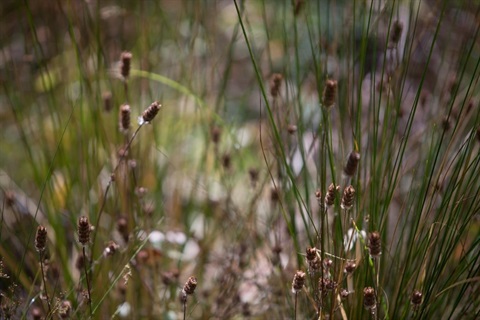Biodiversity Highlights in Burnside

Plants
The vegetation of the Burnside area before European settlement was dominated by a range of vegetation communities termed grassy woodlands dominated by Blue Gum, Grey Box, Mallee Box, Red Gum, Sheoak or Native Cypress Pine.
Under these trees grew a wide range of native grasses and wildflowers, as well as shrubs, that occurred either scattered or in small thickets. The original ground flora is now either extinct or extremely rare in the urban areas, although quite a range of wildflowers and other plants can be found at some places on the hills face.
We are reintroducing wildflowers into urban sites.
Key Vegetation Sites
- Linden Gardens - a showcase of our local flora has been created on a reclaimed urban site with a small artificial wetland.
- Beaumont Common - significant Grey Box woodland relic with careful restoration and management in defined areas.
- Kensington Park Reserve - restoration area under original Red Gum and Blue Gum canopy.
- Langman Reserve - relic Grey Box woodland with walking trail.
- Waterfall Gully Road verge - relict Grey Box woodland with some diverse patches of remnant ground flora.
- Young Park - small urban nature reserve with remnant stand of Native Cypress Pine and many remnant ground flora species.
- AE Cousin Reserve - original Grey Box woodland with a restoration area and a revegetation area.
- Gilles Road Reserve - local wetland flora established along an ephemeral creek line.
Mammals and reptiles
- Brushtail Possums are common but the shy Ringtail Possum can also be seen. Possums have become rare over most of their habitat range but are common in built up areas.
- Echidnas have recently been seen at Ifould Reserve, Langman Reserve and in Auldana South Reserve. They are now rare over most of the State. Their biggest threat is being killed by cars.
- Bats can be seen flying at dusk particularly in places where there are big gum trees or other roosting sites. They eat mosquitoes and other insects.
- Koalas were introduced into the Adelaide Hills in the 1920s and are now often seen in the eastern parts of Burnside. They are vulnerable to being killed on the roads.
- Blue Tongue Lizards are still common, but are declining due to increased urban development and traffic.
- Shingleback Lizards are less common.
- There are several kinds of Skink and a Legless Lizard in the hills face reserves.
- Snakes are also common in the hills face areas and near creek lines. They are native animals and play a valuable role in the balance of nature. Care is obviously needed when you see a snake.
- Frogs are generally restricted to the major creeks and wetlands. The Marbled Frog (Limnodynastes tasmaniensis) is found in most wetland locations and at least two other species occur in First and Second Creeks.
- Goannas are occasionally seen by residents near Slapes Gully. They are rare in the settled areas.
Roads are a big danger to wildlife. Wildlife aware drivers cause less trauma to themselves as well as to wildlife.